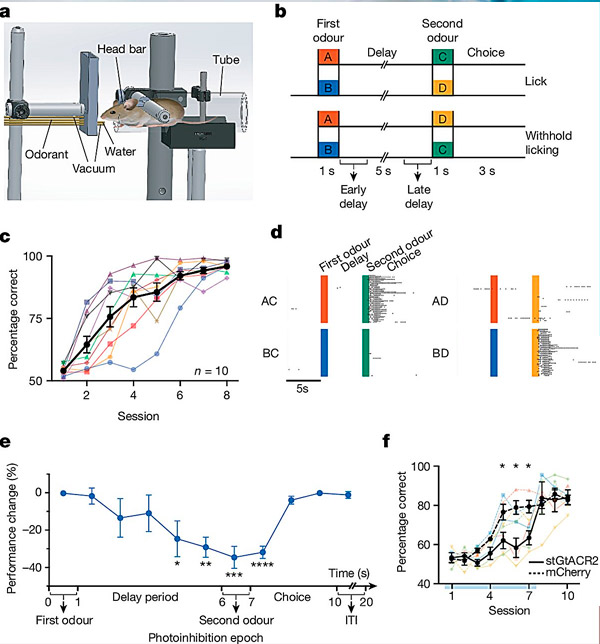Nye publikasjoner
Gjentatt trening forbedrer arbeidsminnet og endrer hjernebanene
Sist anmeldt: 02.07.2025

Alt iLive-innhold blir gjennomgått med medisin eller faktisk kontrollert for å sikre så mye faktuell nøyaktighet som mulig.
Vi har strenge retningslinjer for innkjøp og kun kobling til anerkjente medieområder, akademiske forskningsinstitusjoner og, når det er mulig, medisinsk peer-evaluerte studier. Merk at tallene i parenteser ([1], [2], etc.) er klikkbare koblinger til disse studiene.
Hvis du føler at noe av innholdet vårt er unøyaktig, utdatert eller ellers tvilsomt, velg det og trykk Ctrl + Enter.

En ny studie fra UCLA Health har funnet ut at gjentatt øvelse ikke bare bidrar til å forbedre ferdigheter, men også fører til betydelige endringer i hjernens hukommelsesbaner.
Studien, publisert i tidsskriftet Nature og utført i samarbeid med Rockefeller University, forsøkte å avdekke hvordan hjernens evne til å lagre og behandle informasjon, kjent som arbeidshukommelse, forbedres gjennom trening.
For å teste dette ba forskerne mus om å identifisere og huske en sekvens av lukter i løpet av to uker. Forskerne overvåket dyrenes nevrale aktivitet mens de utførte oppgaven, ved hjelp av et nytt, spesialbygd mikroskop for å avbilde den cellulære aktiviteten til opptil 73 000 nevroner samtidig over hele cortex.
Studien fant endringer i arbeidsminnekretser lokalisert i den sekundære motoriske cortex etter hvert som musene gjentok oppgaven over tid. Da musene først begynte å lære oppgaven, var hukommelsesrepresentasjonene ustabile. Men etter gjentatt øving på oppgaven begynte hukommelsesmønstrene å stabilisere seg, eller «krystallisere seg», sa hovedforfatter og nevrolog ved UCLA Health, Dr. Peyman Golshani.

Effekt av optogenetisk hemming på ytelsen til arbeidshukommelsesoppgaver (WM).
A. Eksperimentelt oppsett.
B. Forsøkstyper i en forsinket-assosiert WM-oppgave; slikk ble vurdert i løpet av den 3 sekunder lange valgperioden, med tidlige og sene forsinkelsesperioder markert.
C. Læringsprogresjon over åtte økter, målt ved prosentandel av riktige svar.
D. Eksempel på treningsøkt, med slikk markert.
E. Effekt av fotoinhibering på oppgaveytelse på tvers av epoker (fjerde sekund av forsinkelsesperioden, P = 0,009; femte sekund av forsinkelsesperioden, P = 0,005; andre lukt, P = 0,0004; første sekund av valgperioden, P = 0,0001). Statistisk analyse ble utført ved hjelp av parede t-tester.
F. Fotoinhibering av M2 i de siste 2 sekundene av forsinkelsesperioden i løpet av de første 7 dagene av treningen svekker oppgaveytelsen. n = 4 (stGtACR2-uttrykkende mus) og n = 4 (mCherry-uttrykkende mus). P-verdier bestemt ved two-sample t-tester for øktene 1–10 var som følger: P1 = 0,8425, P2 = 0,4610, P3 = 0,6904, P4 = 0,0724, P5 = 0,0463, P6 = 0,0146, P7 = 0,0161, P8 = 0,7065, P9 = 0,6530 og P10 = 0,7955. For c, e og f presenteres dataene som gjennomsnitt ± sem NS, ikke signifikant; *P ≤ 0,05, **P ≤ 0,01, ***P ≤ 0,001, ****P ≤ 0,0001.
Kilde: Nature (2024). DOI: 10.1038/s41586-024-07425-w
«Hvis du forestiller deg at hver nevron i hjernen høres ut som én enkelt tone, varierte melodien som hjernen genererte mens den utførte oppgaven fra dag til dag, men ble deretter mer og mer raffinert og lik etter hvert som dyrene fortsatte å øve på oppgaven», sa Golshani.
Disse endringene gir innsikt i hvorfor ytelsen blir mer nøyaktig og automatisk med gjentatt øvelse.
"Denne oppdagelsen fremmer ikke bare vår forståelse av læring og hukommelse, men har også implikasjoner for å håndtere problemer knyttet til hukommelsessvekkelse," sa Golshani.
Arbeidet ble utført av Dr. Arash Bellafard, en prosjektforsker ved UCLA, i nært samarbeid med Dr. Alipasha Vaziris gruppe ved Rockefeller University.
